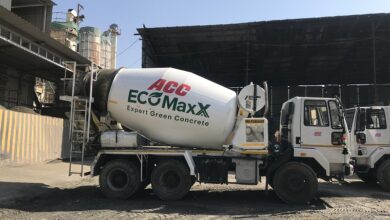How urbanization has changed the face of real estate
Authored by Atul Goel, MD, Goel Ganga Group

We all know that urbanization is the process through which cities grow and a higher number of populations migrate into cities for their living which in itself means that more area is required for the living of those populations.
When the population flows from rural areas to urban areas, the development of the urbanization process brings interaction between urbanization and the real estate market. The development of the real estate market is considered with the increase in demand for houses.
According to the United Nations, more than one-half of the world’s population lives in urban areas and almost all the countries in the world are becoming increasingly urbanized which leads to the growth of Real Estate as these people will require properties to reside in. By 2050 the urban percentage population is expected to rise by 2.5 billion.
With this global phenomenon, huge demand for infrastructure and real estate has been seen. This has led to creating massive opportunities for a sophisticated environment and a flock of investable assets. After the declaration of housing, the demand for land has massively increased resulting in a positive growth in real estate. Now the evolution of real estate can be seen in every city. Real estate projects have emerged one after another and many high-rise buildings have emerged.
According to PWC in 2015, 85% of global GDP was generated in cities from which the maximum arrived from real estate. After urbanization real estate has the ability to add value for both people and companies which has led to the urban renaissance. For example, smart new-rise apartments, office blocks and retail and leisure facilities now demonstrate sophisticated urban environments. Now the institutional investments in retail real estate have jumped to 492 million US$ in 2022 as compared to an investment of 77 million US$ in 2021.
Real estate along with the process of urbanization has given rise to the next generation infrastructure which is more people centric and invites investors with a bounty of investment opportunities which attract investors from different fields.
From a diminished demand for physical retail space to repurposing assets to develop homes, hotels, leisure and amenities Real estate has seen a boom during the period of urbanization. Lower use of cars is also changing the real estate sector by placing a greater emphasis on locations which are served by public transport. Real estate for better social take has somehow helped in the growth of industrialisation, better health care and medical facilities and has contributed to increasing the standard of living in urban areas.
Real estate has also contributed towards today’s modern-day trade and commerce for better social status and most important that it also helped in employment generation in cities.
So the results show that economic, population and spatial urbanization can all increase the demand for real estate but its impact varies according to the field. The gradual effect of population urbanization and the income effect of economic urbanization have the greatest contribution to the real estate business. As briefed earlier, the impact of population, and economic urbanization, especially the increase in per capita income level is the real reason for the increase in real estate demand. So urbanization which leads to the improvement of infrastructure has a positive impact on real estate which resulted in an increase in investment in real estate.
So from people living in rural areas having lands for farming, agriculture, irrigation etc to a completely changed society having a high standard of living, urbanization has really changed the face of real estate in a positive way in those years.






